392 Chrysler Fire Power HEMI® Exhaust Manifolds vs. Headers: How Efficient Are They?
Exhaling the Whale
There are three generations of the FCA Dodge HEMI engine and they all love to breathe. The inherently efficient intake and exhaust ports, smartly targeted valve opening trajectories and large diameter valve heads pass plenty of incoming fuel/air mixture and outgoing exhaust gas with minimized shrouding.
This fact is true regardless of whether we’re discussing the First (1951-1958), Second (1964-1971 and current Mopar Performance Parts crate HEMI program) or Third (2003-present) Generation of this legendary American V8 engine.
But it takes a systematic approach to maximize what any HEMI has to offer. As good as the hemispherical cylinder heads are, they’re only part of the equation. The type of exhaust plumbing attached to the head’s exhaust port face plays a major role in helping – or hindering – the HEMI’s full potential. This is why many weekend horsepower seekers like to install aftermarket exhaust headers on their brand-new engines the day after taking showroom delivery.
The very first salvo in the Chrysler HEMI engine campaign, the aptly named Fire Power launched in 1951 and gave Chrysler owners their first taste of V8 fun. Sized at 331 cubic inches (1951-55), 354 cubes (1956) and 392 cubes (1957-58), drag racers like “Big Daddy” Don Garlits made entire careers pushing the HEMI to its limits with supercharging and heavy doses of nitromethane. On Main Street, U.S.A., bankers aboard posh new 1951 Chrysler New Yorkers enjoyed 180 horsepower, a full 20 horsepower advantage over their rivals aboard Cadillac’s most potent luxury machines.
In this story, we’re comparing a set of stock Chrysler passenger car exhaust manifolds to a set of free-flowing steel tube exhaust headers from Hot Heads Performance, a well-known supplier of First Generation HEMI performance parts. The test engine is a 1957 Fire Power 392 that’s been rebuilt for fun street and strip use. With its mild 0.040-inch overbore bringing total displacement up to 398 cubes, 9.5:1 compression ratio, 0.485-inch lift hydraulic cam and modern 750 cfm Quick Fuel four-barrel carburetor mounted atop a Hot Heads single plane intake, we got 408 horsepower and 463.6 lb.-ft. of torque exhaling through the stock cast iron exhaust manifolds. That’s not bad considering Chrysler rated the 1957 392 at 350 (mild) and 375 horsepower (300C).
With no changes other than a switch to a set of Hot Heads steel tube headers with 1-7/8 inch primary tubes, the mighty HEMI picked up a full 23 horsepower and 25.6 lb.-ft. of torque. The point is, reducing exhaust back pressure pays dividends every time.

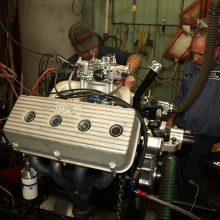
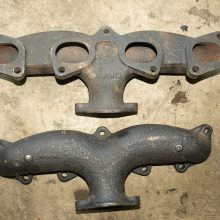
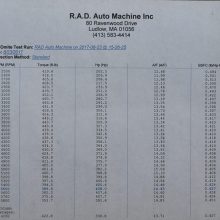
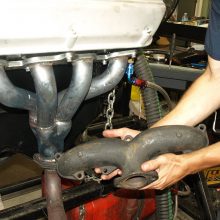

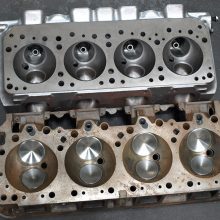
0 Comments